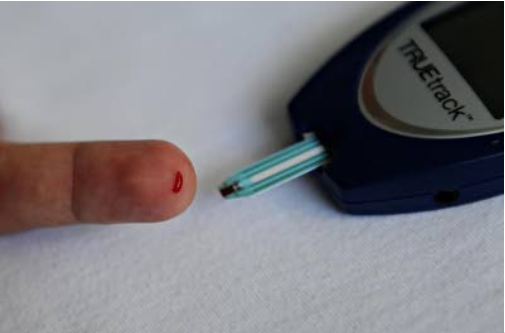Forty percent of girls and women with Type 1 diabetes have or will develop an eating disorder.
Diagnosed with Type 1 diabetes at age 5, Asha Brown was aware that the insulin she required daily to survive could also invite an unpleasant side effect: weight gain.
By the time she was a teenager, she began skimping on calories, doing everything she could to stay below 1,600 per day. Come college, she’d skip entire doses of insulin, only injecting a few units of the vital hormone to keep herself from passing out – just when her body would break down near the point of diabetic ketoacidosis, a potentially life-threatening complication. The physical toll of insulin deprivation was severe. She’d sleep through class, wake up nearly every hour nightly to use the restroom, and feel confused and extremely dehydrated.
Though she didn’t know it then, Brown was suffering from “diabulimia,” an increasingly recognized disorder among people with diabetes who “starve” themselves of insulin in hopes of slimming down. Weight gain often goes “hand in hand” with insulin therapy, according to the Mayo Clinic’s website, and while weight can be safely kept in check, the prospect of gaining can lead some down a dangerous path.
“When people are not taking their insulin purposefully, they feel absolutely rotten on a day-to-day basis,” says Lorraine Platka-Bird, a registered dietitian and director of nutrition at the Center for Hope of the Sierras in Reno, Nevada. The long-term damage to the body’s vital organs, including the kidneys and heart, can be fatal if not treated.
While the prevalence of “diabulimia” is unknown, approximately 30 to 40 percent of young girls and women with Type 1 diabetes have developed or will develop an eating disorder, Platka-Bird says. This might be attributed to the fact that diabetes management already creates a fierce focus on food, numbers and control, which can escalate into an eating disorder in some patients, according to Marcia Meier, registered nurse and program manager of patient services at the International Diabetes Center at Park Nicollet in St. Louis Park, Minnesota.
Fatigued from her routine, Brown struggled to maintain her responsibilities as a college student, as her body, deprived of insulin, struggled to turn sugars from food into energy.
“I would flake out and [make] up lies to spend the rest of the day trying to figure out how to balance out what I had done,” she says, recalling how she’d sometimes pass out for hours due to exhaustion. “I was doing more damage to my body than good. When your blood sugar is over 250, the muscles aren’t getting the proper amount of oxygen.”
As a result of diabulimia combined with her diabetes, Brown, now 30, lives with a debilitating chronic muscle pain disorder called myofascial pain syndrome. Still, she considers herself lucky.
Patients with diabetes are already at risk for a long list of complications, ranging from heart, nerve and kidney damage to blindness and amputation. When they upset the delicate balance required to keep them healthy despite a faulty pancreas, they invite those complications at much younger ages and with greater severity than they might have otherwise. Compound that with eating disorders, which also come with a host of health problems, and patients are at risk for a cocktail of long-term degenerative diseases.
“We’ve had patients at our center that were in their early 20s and already had severe neuropathy. One patient was already blind in one eye and severely visually impaired in the other,” Platka-Bird says.
Read the full post in U.S. News Health










